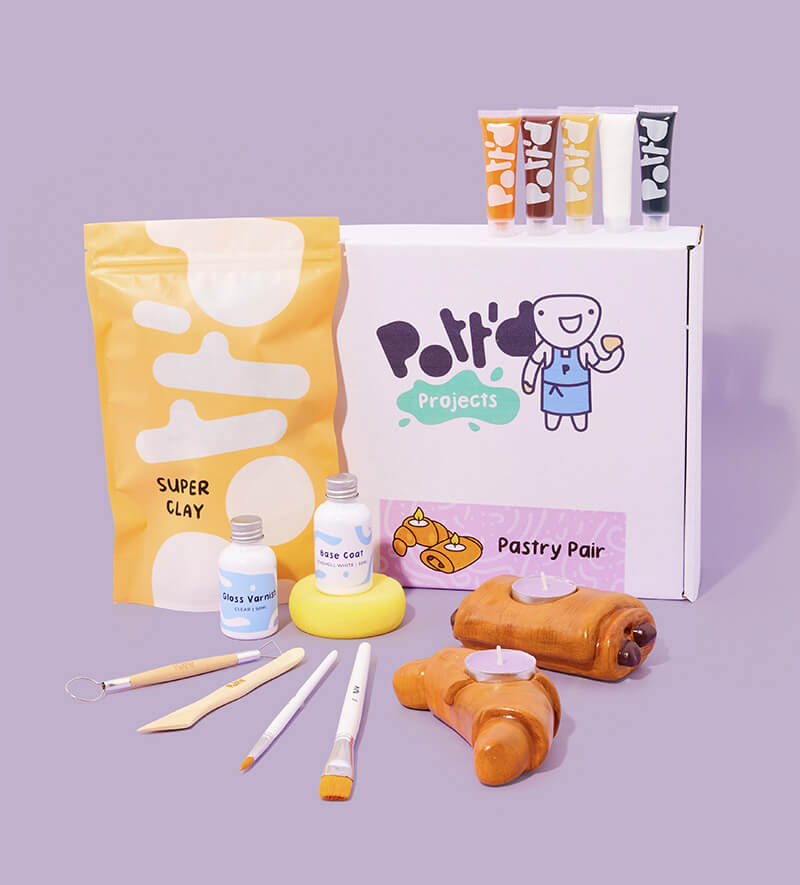Research shows that art has a healing effect on mental health, especially in the fast-paced world of today. One of the most powerful and engaging forms of art therapy is pottery. The tactile nature of working with clay provides a creative outlet for emotions, which can do wonders for a person.
Are you thinking about using pottery as a form of art therapy or to reduce negative emotions in life? Here is a guide on the benefits of pottery and how you can get started.
What is art therapy?
Art therapy is a form of psychotherapy that utilizes the creative process of making art to improve a person's physical, mental, and emotional well-being. It combines traditional psychotherapeutic theories and techniques with an understanding of the psychological aspects of the creative process, especially the affective properties of different art materials. This integrative approach provides individuals with a means of expressing themselves beyond words, facilitating self-exploration, emotional release, and healing.
Why is pottery a good form of art therapy?
Clay work is one of the most effective art therapy activities due to its many benefits on the body and mind.

Mindfulness and stress reduction
Pottery offers a unique and engaging avenue for mindfulness and stress reduction. Working with clay encourages individuals to focus intently on the sensations and movements involved in shaping and molding their creations. This deep concentration helps shift attention away from external stressors and anxieties, fostering a state of mindfulness.
The repetitive motions of kneading, shaping, and smoothing the clay further contribute to a meditative rhythm, promoting relaxation and mental clarity. As individuals immerse themselves in the creative process, they experience a sense of calm and present-moment awareness.
Emotional expression and self-expression
Pottery allows individuals to convey feelings and experiences that may be difficult to articulate verbally. The physical act of molding and shaping clay provides a direct, hands-on connection to one's inner world, translating abstract emotions into tangible forms.
As the potter's hands work the clay, they can channel their emotions into each piece, creating a powerful and personal narrative through texture, shape, and design. Pottery is a versatile art form that lets its creator bring their thoughts and feelings to life. Through this process, people can realize their ideas and imagination, thus gaining insights into their emotional state and identity. This creative process not only facilitates the release of pent-up emotions but also fosters self-awareness and self-acceptance, promoting healing and personal growth.
Enhancing creativity and problem-solving
Pottery is an exceptional medium for enhancing creativity and problem-solving skills. The process of transforming a lump of clay into a finished piece demands innovative thinking and adaptability. As individuals experiment with different shapes, textures, and techniques, they are encouraged to think outside the box and explore new ideas.
The tactile nature of pottery fosters a deep connection with the material, allowing for spontaneous and intuitive creation. When faced with challenges such as structural integrity, design flaws, or unexpected outcomes during firing, potters must employ critical thinking and problem-solving strategies to achieve their vision. This continuous cycle of creation, reflection, and adjustment not only cultivates artistic skills but also enhances cognitive flexibility and resilience, making pottery a powerful tool for personal and creative development.
Getting started with pottery as art therapy

Contrary to popular belief, you can get started with pottery without a spinning wheel or a kiln. Air-dry clay is a form of clay that doesn’t need fire to harden, making it perfect for hobbyists and beginner potters. Here are some more tips to help you with creating the perfect environment to get started on your healing process with pottery.
Setting up your space
Create a dedicated, comfortable space for your pottery practice. If you’re working with air-dry clay, it’s good to have a comfortable chair or seat that supports the right posture. If you’re working with traditional clay, ensure you have a sturdy table, a potter’s wheel (if available), and a kiln for firing your pieces. Good lighting and ventilation are also important.
Gathering materials
Basic materials include clay, pottery tools (such as carving tools, sponges, and wire cutters), a wheel (optional), glazes, and a kiln. Start with air-dry clay if you don't have access to a kiln.
Learning the basics
Enroll in a pottery class or workshop to learn fundamental techniques like wedging, pinching, coiling, and slab building. Many community centers and art studios offer beginner courses. Online tutorials and videos can also be helpful resources. Some home pottery kits also come with instructions and guided imagery, which you can immediately follow, making it easier to create and finish art projects.
Embracing the process
Remember, the goal of pottery as art therapy is not to create perfect pieces but to enjoy the process. Allow yourself to experiment and make mistakes. The act of creation itself is therapeutic.
Joining a community
Engage with a community of fellow pottery enthusiasts. Sharing your work, discussing techniques, and receiving feedback can enhance your creative expression, boost your self-esteem, and provide additional support and motivation.

Last thoughts
Pottery, like painting or music, can have positive effects on self-regulation, self-image, and self-discovery. Clay work can encourage you to express feelings that otherwise could not be done through words and improve the relationships you have with people around you and with yourself. If you’re looking to start with pottery, consider getting an air-dry clay kit, which comes with instructions and tools to help beginners relieve stress.

